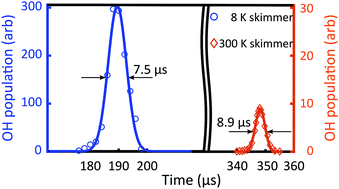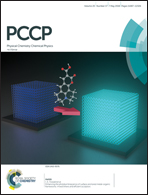Enhancing radical molecular beams by skimmer cooling
Abstract
A high-intensity supersonic beam source has been a key component in studies of molecular collisions, molecule–surface interaction, chemical reactions, and precision spectroscopy. However, the molecular density available for experiments in a downstream science chamber is limited by skimmer clogging, which constrains the separation between a valve and a skimmer to at least several hundred nozzle diameters. A recent experiment (Sci. Adv., 2017, 3, e1602258) has introduced a new strategy to address this challenge: when a skimmer is cooled to a temperature below the freezing point of the carrier gas, skimmer clogging can be effectively suppressed. We go beyond this proof-of-principle work in several key ways. Firstly, we apply the skimmer cooling approach to discharge-produced radical and metastable beams entrained in a carrier gas. We also identify two different processes for skimmer clogging mitigation—shockwave suppression at temperatures around the carrier gas freezing point and diffusive clogging at even lower temperatures. With the carrier clogging removed, we now fully optimize the production of entrained species such as hydroxyl radicals, resulting in a gain of 30 in density over the best commercial devices. The gain arises from both clogging mitigation and favorable geometry with a much shorter valve–skimmer distance.

- This article is part of the themed collection: 2018 PCCP HOT Articles


 Please wait while we load your content...
Please wait while we load your content...